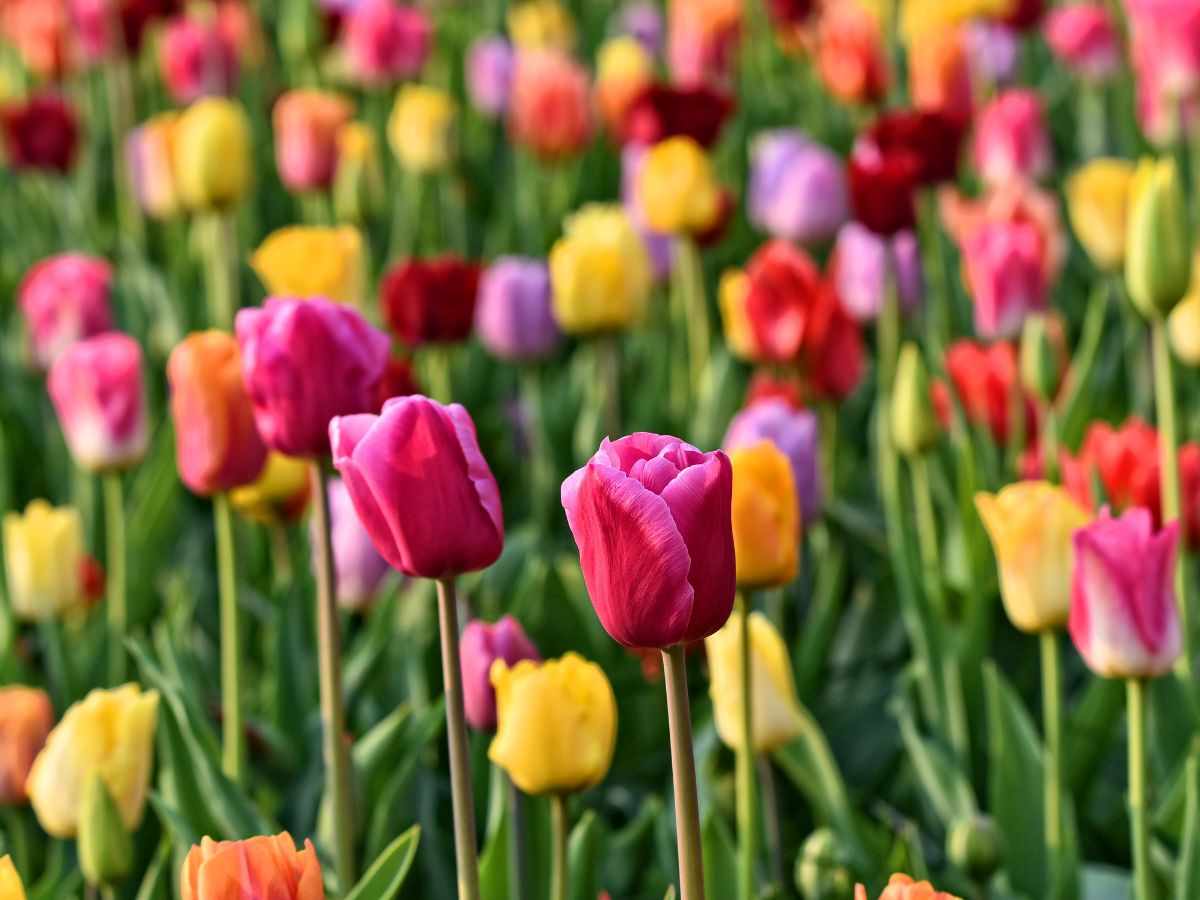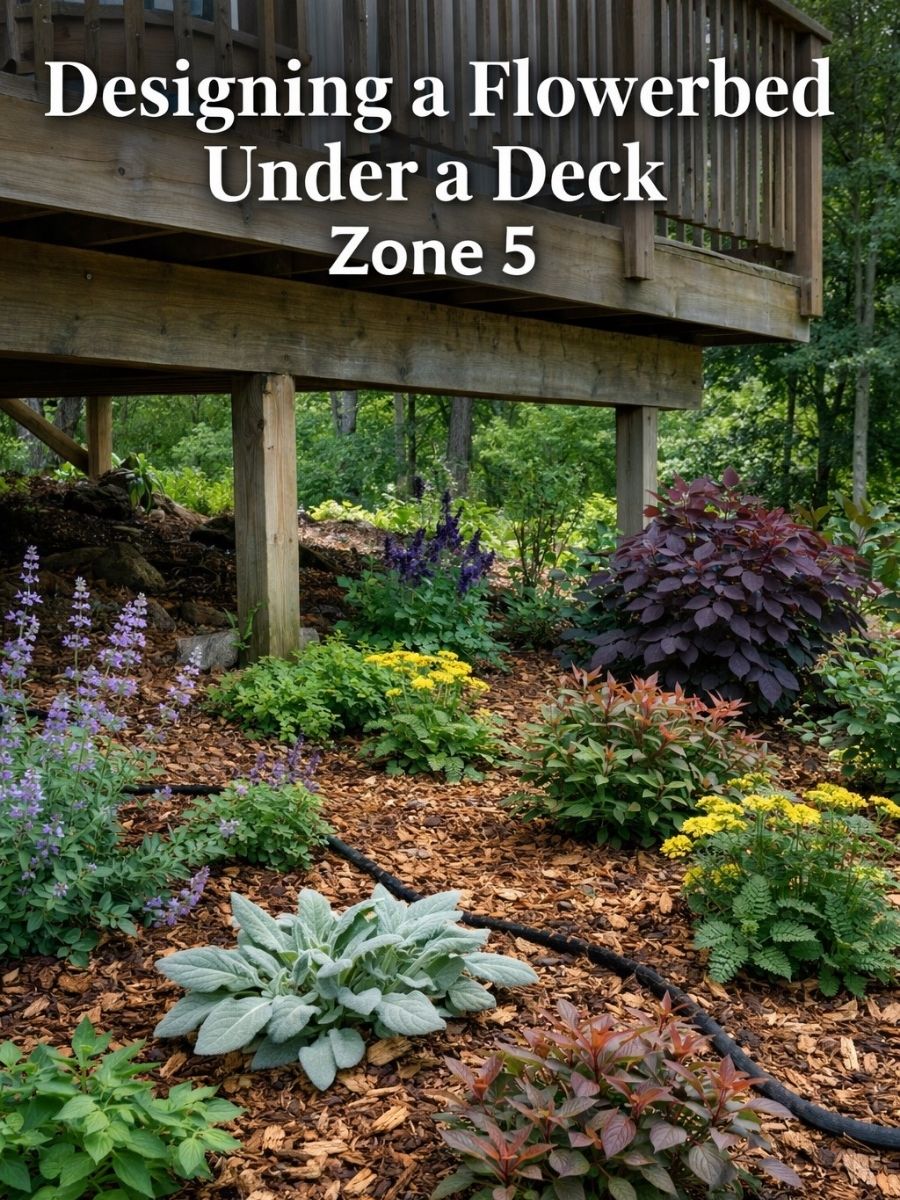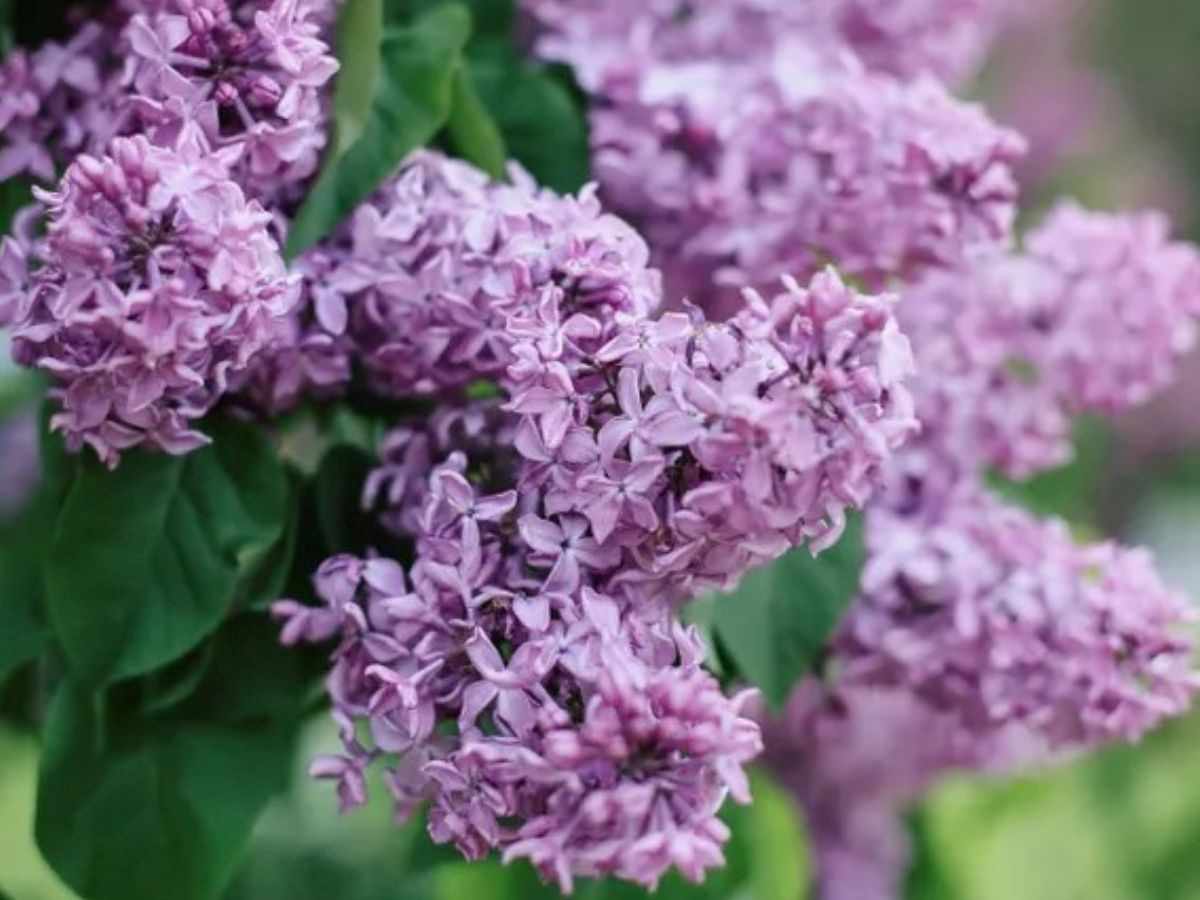Learn how to care for tulips and how to grow them in this article. Tulips, with their vibrant colors and graceful forms, have enchanted gardeners and flower enthusiasts for centuries. These iconic blooms, native to Central Asia, have captured the hearts of people around the world, becoming synonymous with beauty, elegance, and the arrival of spring.
Disclosure: This post contains affiliate links. As an Amazon Associate I earn from qualifying purchases.
Where Did Tulips Originally Come From?
Tulips have a rich and storied history that dates back to the Ottoman Empire in the 16th century. Originally cultivated in the imperial gardens of Constantinople (now Istanbul), tulips were prized for their beauty and became a symbol of wealth and prestige.
They quickly gained popularity throughout Europe, sparking a phenomenon known as “Tulip Mania” in the Netherlands during the Dutch Golden Age, where tulip bulbs were traded at exorbitant prices.

How To Grow And Care For Tulips
Tulips are relatively easy to grow, making them a popular choice for both novice and experienced gardeners alike.
They prefer well-drained soil and plenty of sunlight, making them ideal for planting in garden beds, borders, or containers.
When Is The Best Time To Plant Tulips
Plant tulip bulbs in the fall, about 4-6 weeks before the ground freezes. Choose a location with well-drained soil and full sun exposure.
Tulips prefer well-drained soil with a pH between 6.0 and 7.0. If your soil is heavy or clay-like, consider amending it with organic matter like compost to improve drainage.
Before planting, mix in some bulb fertilizer or bone meal into the soil. Once the tulips emerge in spring, you can fertilize them lightly with a balanced fertilizer. Avoid high-nitrogen fertilizers as they can encourage lush foliage growth at the expense of flowers.
Water newly planted bulbs thoroughly to settle the soil around them. After that, tulips generally don’t need much watering unless there’s a prolonged dry spell. Too much moisture can cause bulbs to rot.
Apply animal repellent to prevent squirls, chipmunks, voles, and the like from devouring the bulbs. You can also place a metal mesh or chicken wire over the area where the tulips have been planted to stop critters from eating them.
Once Planted they will emerge in early spring to delight with their exquisite blooms.
With proper care, including regular watering, fertilizing, and deadheading, tulips can thrive and return year after year, bringing joy and color to the garden.

How To Get Tulips To Return Year After Year
Many people plant tulips as an annual because they think that they will not return with the same strength in the following year. However, with proper care and fertilization, your tulips will thrive and come back with force every year.
I have had my tulips return in full force year after year using these 4 simple steps.
- Fertilize in the spring once the foliage immerges.
- Remove the spent flowers to prevent the plant from putting energy into seed production. This encourages the bulb to store energy for the next growing season.
- Allow the foliage to turn yellow and fully die back, before you can remove it. Avoid braiding or tying the foliage, as this can inhibit the process.
- fertilize again for the second time once the foliage dies back.
Bulb producing plants require plenty of fertilizer. This is also true in the case of tulips because they are producing, in a way, two fruits, the flowers, and the bulblets or baby bulbs.
So fertilizing them twice is key to allowing them to store enough starches in their bulbs for the next season. These starches will then allow the bulbs to produce flowers in the consecutive year as well as more bulbs, or bulblets as they are deemed.

Mulching
Apply a layer of mulch over the soil after planting to help regulate soil temperature and retain moisture. Mulch also helps suppress weeds.
When And How to Divide Tulips
Tulip bulbs can become overcrowded over time, leading to smaller blooms. Every few years, dig up the bulbs after foliage has died back, separate them, and replant them.
I have also successfully dug up and replanted bulbs after they have immerged, but before they bloomed.
To transplant bulbs that are newly immerged, carefully dig up the bulbs without breaking the stem. Create a hole that is deep enough to cover the bulb and the white part of the stem.
Apply Organic Fertilizer into the hole, carefully place your tulips into the pre dug hole, covering it with soil up to where the stem turns green. Any white part of the stem should be covered with soil.
If your tulip bulbs are too small avoid planting them too deep as this may prevent them from blooming or they may give you very short tulip stems.

How To Grow Tulips In Warm Climates
Growing tulips in warm climates can be challenging, as these bulbs typically require a period of cold dormancy to bloom successfully. However, with the right approach, it is still possible to enjoy these beautiful flowers even in warmer regions. Here are some tips for growing tulips in a warm climate:
Choose The Right Varieties Of Tulips
Look for tulip varieties that are specifically bred for warmer climates. These varieties are often referred to as “low-chill” or “heat-tolerant” tulips.
Some examples include Darwin hybrids, Fosteriana tulips, and species tulips like Tulipa saxatilis or Tulipa clusiana. These varieties are more adapted to milder winters and warmer temperatures.
Pre-chilling Your Tulip Bulbs
Tulip bulbs require a period of cold temperatures (usually around 8-12 weeks of temperatures below 45°F or 7°C) to break their dormancy and stimulate flowering.
If you live in a warm climate, you can mimic these conditions by pre-chilling the bulbs in the refrigerator before planting. Place the bulbs in a paper bag or mesh bag and store them in the vegetable crisper section of the refrigerator for the recommended period before planting.
Do not place any fruits with your tulip bulbs. Fruits release a gas known as ethylene gas. If Present, Ethylene gas will cause your bulbs to rot.

When To Plant Tulips In Warm Climates
In warmer climates, it’s best to plant tulip bulbs in late fall or early winter, when the soil temperatures have cooled down but before the onset of the coldest weather. This allows the bulbs to establish roots before the arrival of warmer temperatures in spring.
Choose The right Location
Select a planting site that receives partial shade or dappled sunlight, especially during the hottest part of the day. This helps prevent the bulbs from overheating during periods of intense sunlight and heat.
Proper Plant Spacing
Good air circulation around the plants can help prevent fungal diseases and promote healthy growth. Avoid overcrowding tulips and ensure there is space between plants for air to flow freely.
Proper Storage And Tulip Care
Fertilize tulips once at planting time, and a second time after they are done blooming.
Once the foliage fully dies back, dig up your tulip bulbs, remove any plant matter attached to them. You can also cut back any excess roots. Extra long roots may accumulate moisture while being stored causing your bulbs to rot.
Store them in your fridge in the vegetable crisper drawer for up to 12 weeks until ready to plant again.
By following these tips and selecting appropriate varieties, you can successfully grow tulips in warmer climates and enjoy their beauty in your garden. While it may require a bit more attention and care, the sight of tulips in bloom is well worth the effort.

Tulip Varieties And Colors
One of the most remarkable features of tulips is their incredible diversity. They come in an array of shapes, sizes, and colors, ranging from delicate pastels to vibrant primaries.
There are thousands of tulip varieties, including single-flowered, double-flowered, fringed, and parrot tulips, each with its own unique charm.
Some popular varieties include the classic red Tulipa gesneriana, the elegant white Tulipa ‘White Triumphator’, and the strikingly beautiful Tulipa ‘Black Parrot’.
Watch: How To Plant Tulips
Tulip Planting Tools
We all want that beautiful spring display of tulips, but often dread the planting process, especially when planting a large amount of bulbs. There are many tools that can make this job much easier and more enjoyable.
The number one tool on the list is a Planting Auger. Attach that to a powerful drill with an e clutch and you got yourself the best planting tool on earth, granted if you don’t have rocks in your soil. The e clutch in the drill is supposed to stop it from turning in case if it hits any rocks, roots, or the likes.
The second best planting tool on the list is a bulb planter. Bulb planters come in various sizes and diameters. Choose the right size for the right bulb. Simply push it into the ground, remove the soil, and plant. No power tools required.
And The last option of course is a shovel, spade, or a digging axe. These tools allow you to create a trench in case you want to create a large drift or large clumps.

Pin This Post!

More Gardening and Recipe Related Topics
Gardening
Recipes
How To Cook Salmon – 5 Easy Methods
Rustic Swiss Chard Tart – Gluten Free
Shop This Post
powerful drill with an e clutch
Tell Us What You Think!
In a world filled with natural wonders, tulips stand out as a timeless symbol of beauty, grace, and renewal.
From their humble origins in the gardens of ancient empires to their widespread cultivation in gardens and landscapes around the globe, tulips continue to captivate and inspire all who encounter them.
Whether adorning a vase on a windowsill or carpeting a field in full bloom, tulips remind us of the simple joys of nature and beauty.
Is this your first time growing tulips? Let us know if you have any comments or questions down in the comment section below.





Be the first to reply